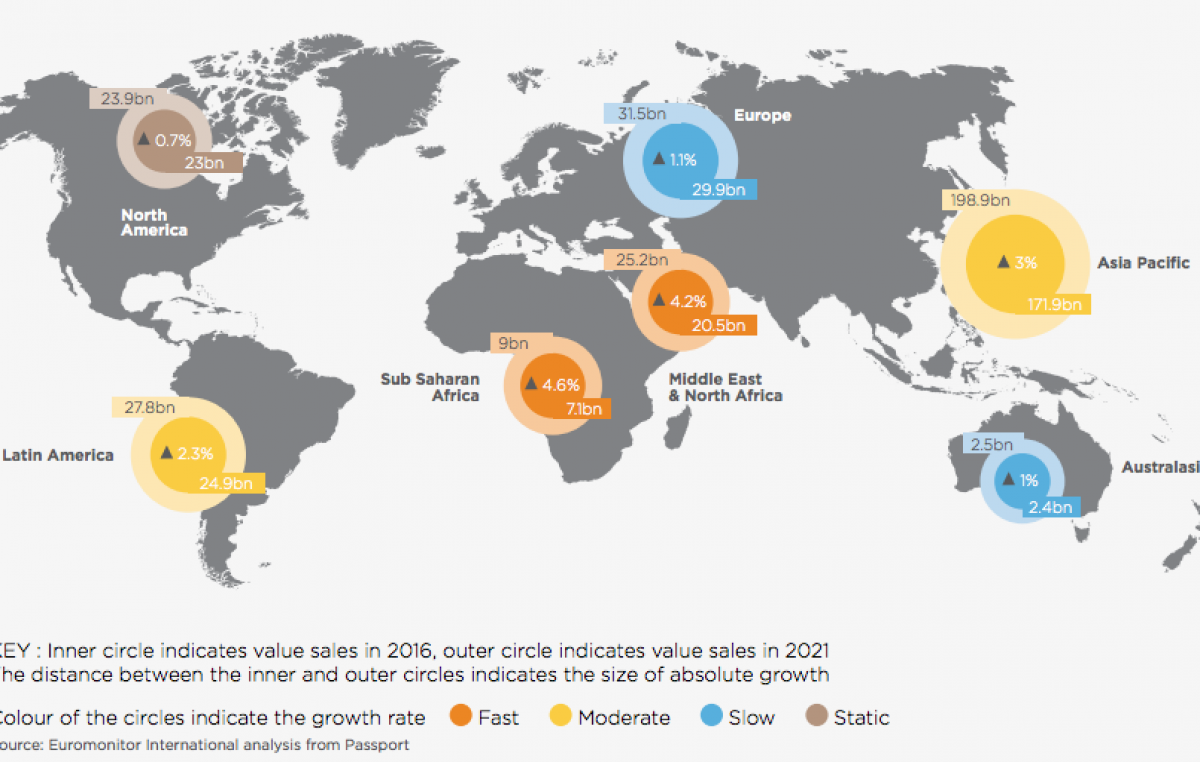Africa drives growth in cereal sales
Foodstuff , Industry ReportsBy far the fastest growth in cereals stems from Africa, led by Sub-Saharan Africa, but with the Middle East and North Africa also growing strongly. Total global market value of pulses, grains and cereals reached US$279.7 billion in 2016 and is forecast to reach US$286.4 billion in 2017. In both cases, this is from a small base, led by consumers in lowerincome areas of these regions trading up to packaged versions of staple cereals.
In most developed markets, sales of cereals are at saturation point, with little room left for growth. North America, following a decline over the review period, is expected to be stable to 2021. Diversifying diets and moves away from carbohydrate-heavy foods mean these are difficult markets to navigate.
 Growth prospects come instead in cereals that offer newness and/or healthy options (Asian-style noodle dishes, quinoa-based pasta) or offer added-value convenience (microwaveable rice, chilled pasta and noodle dishes). Breakfast cereals face similar prospects, with a reputation for being unhealthy and due to competition from other convenient options, such as breakfast bars. However, health positioned options such as granolas and mueslis are faring better.
Growth prospects come instead in cereals that offer newness and/or healthy options (Asian-style noodle dishes, quinoa-based pasta) or offer added-value convenience (microwaveable rice, chilled pasta and noodle dishes). Breakfast cereals face similar prospects, with a reputation for being unhealthy and due to competition from other convenient options, such as breakfast bars. However, health positioned options such as granolas and mueslis are faring better.
Alongside North America, growth is also sluggish in the more developed Western European markets: here maturity combines with trends away from carbohydrate-based meals to create a difficult operating environment. Value growth is supported by rising unit prices.
The fastest growth is visible where there is still room to grow in consumption levels of packaged staples and where breakfast cereals are at an earlier stage of
development, with a healthier image – this is focused on Sub-Saharan Africa but also includes areas in North Africa, parts of Asia, and Central America.
Dynamic growth in Sub-Saharan Africa is the result of consumers trading up to packaged products. In Nigeria, for example, sales of instant noodles are
rocketing as they are low priced (in a period of relatively high pricing on imported rice), easil available and convenient to prepare, and are particularly
popular among urban families with young children.









